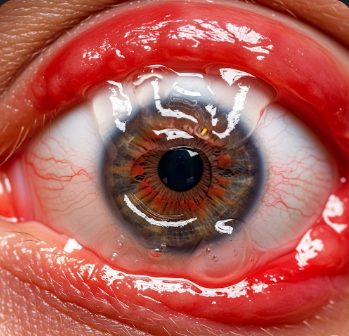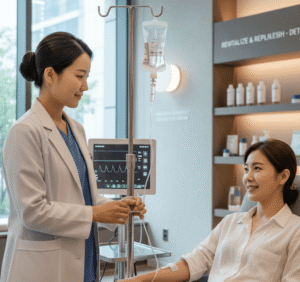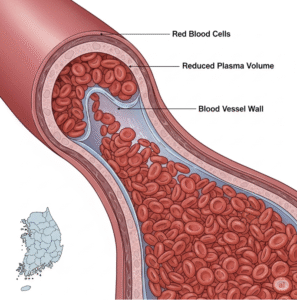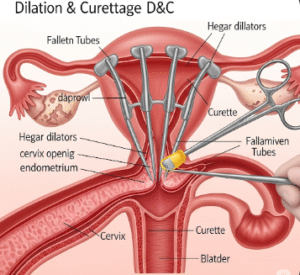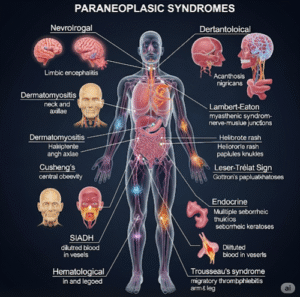Overview
Chemosis is the swelling (edema) of the conjunctiva, the clear membrane covering the white part of the eye and the inner eyelids. This condition causes a puffy, gelatinous appearance of the eye’s surface and is often a sign of underlying ocular or systemic issues, ranging from allergies to serious eye infections.
In South Korea, ophthalmology clinics provide comprehensive diagnostic services, including slit-lamp examination, allergy testing, and treatment options for both temporary and chronic chemosis.
Key Facts
Highlights:
➡️ Chemosis manifests as swollen, waterlogged conjunctiva, sometimes covering part of the cornea.
➡️ Common triggers include allergies, infections, trauma, and systemic diseases.
➡️ Severe or persistent chemosis can interfere with vision and indicate a more serious underlying condition.
➡️ Prompt ophthalmic evaluation is crucial to prevent complications.
➡️ South Korea offers advanced eye care, including medical, surgical, and laser-based interventions for associated ocular disorders.
What is Chemosis?
Chemosis is the edematous swelling of the conjunctiva, often presenting as:
- Bulging or puffiness of the eye’s white part
- Watery, gelatinous appearance that may extend beyond the eyelid margin
- Redness or hyperemia due to increased vascular permeability
- Discomfort or foreign-body sensation, sometimes with itching or irritation
- Associated tearing or eye discharge in some cases
Key characteristics:
- Can affect one eye (unilateral) or both eyes (bilateral)
- Severity varies, from mild transient swelling to pronounced, persistent edema
- Often a visible indicator of allergies, infections, or systemic diseases
What Symptoms are Related to Chemosis?
Symptoms often accompany the visible swelling and can include:
- Eye redness or bloodshot appearance
- Itching or burning sensation
- Tearing (epiphora)
- Discomfort when blinking or moving the eyelid
- Blurred vision if swelling covers part of the cornea
- Sensitivity to light (photophobia) in severe cases
Highlights:
➡️ Chemosis is usually painful or uncomfortable, depending on the cause.
➡️ Associated symptoms may guide diagnosis, distinguishing between allergic, infectious, or systemic causes.
➡️ Persistent chemosis requires prompt medical evaluation to prevent complications.
What Causes / Possible Causes of Chemosis?
Highlights:
➡️ Allergic Reactions: Pollen, dust, or pet dander can trigger conjunctival swelling.
➡️ Infections: Bacterial, viral, or parasitic eye infections may cause chemosis.
➡️ Trauma or Injury: Blunt trauma, chemical exposure, or post-surgical irritation.
➡️ Systemic Conditions:
- Hypoalbuminemia or kidney disease causing fluid retention
- Thyroid eye disease (Graves’ ophthalmopathy)
- Heart failure leading to periorbital edema
➡️ Other Causes: Contact lens irritation, ocular medications, or insect bites near the eye.
➡️ Mechanism: Increased vascular permeability in the conjunctiva leads to fluid accumulation, resulting in visible swelling.
When Should I See My Doctor?
Highlights:
➡️ If swelling persists more than 24–48 hours or worsens over time.
➡️ If accompanied by pain, vision changes, or discharge.
➡️ If there is a history of trauma, chemical exposure, or systemic illness.
➡️ For recurrent or bilateral chemosis, evaluation is necessary to rule out allergies, thyroid eye disease, or systemic causes.
➡️ Early consultation ensures correct diagnosis, targeted therapy, and prevention of complications.
Care and Treatment
Management of chemosis depends on the underlying cause:
Highlights:
➡️ Allergic Chemosis:
- Topical antihistamines or mast cell stabilizers
- Oral antihistamines for systemic allergy control
- Cold compresses to reduce swelling
➡️ Infectious Chemosis:
- Antibiotic or antiviral eye drops as indicated
- Proper hygiene to prevent spread of infection
➡️ Trauma-Induced Chemosis:
- Artificial tears for lubrication
- Anti-inflammatory medications or steroid drops if severe
- Protective eyewear to prevent recurrence
➡️ Systemic-Related Chemosis:
- Treat underlying conditions such as thyroid disorders, heart failure, or kidney disease
- Monitor fluid retention and adjust systemic therapy accordingly
➡️ Supportive Care:
- Avoid rubbing the eyes
- Maintain eye hygiene
- Follow-up monitoring to assess resolution or progression
Treatment Options in Korea
South Korea provides comprehensive ophthalmic care for patients with chemosis:
Highlights:
➡️ Ophthalmology Clinics: Diagnosis using slit-lamp examination, fundus imaging, and ocular pressure evaluation.
➡️ Allergy Testing Centers: Identify triggers for allergic chemosis with tailored therapy.
➡️ Advanced Eye Care: Prescription eye drops, surgical interventions if needed, and post-trauma rehabilitation.
➡️ Endocrinology Collaboration: Management of thyroid eye disease-related chemosis.
➡️ Multidisciplinary Approach: Coordination between ophthalmologists, allergists, and systemic disease specialists.
➡️ Patient Education: Guidance on prevention, eye hygiene, and recognition of warning signs.
➡️ Medical Tourism Support: Multilingual consultations, diagnosis, and follow-up care for international patients.

